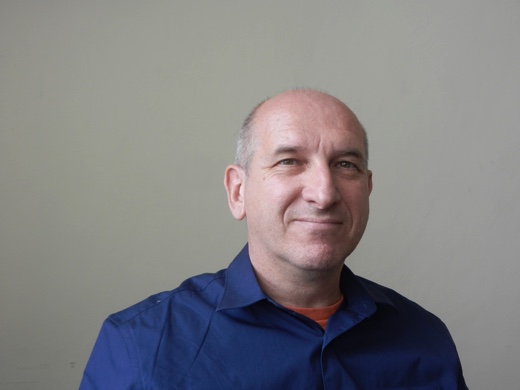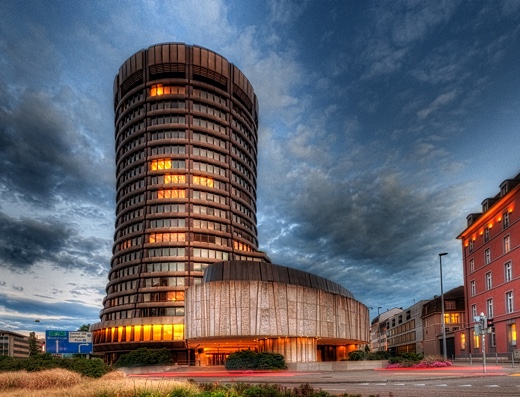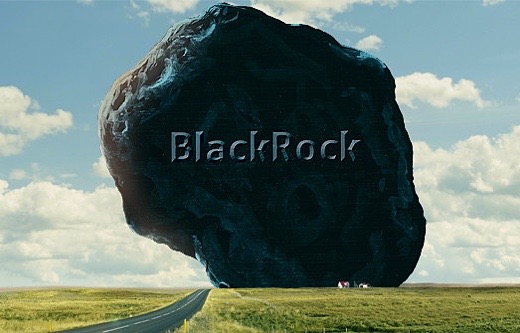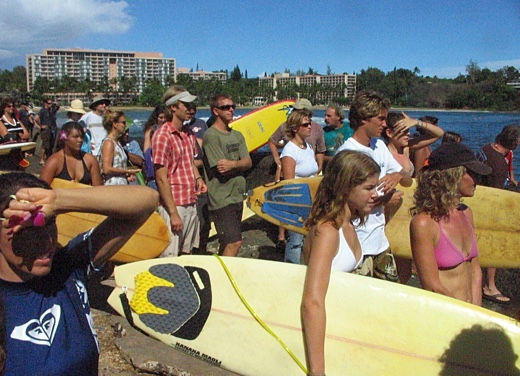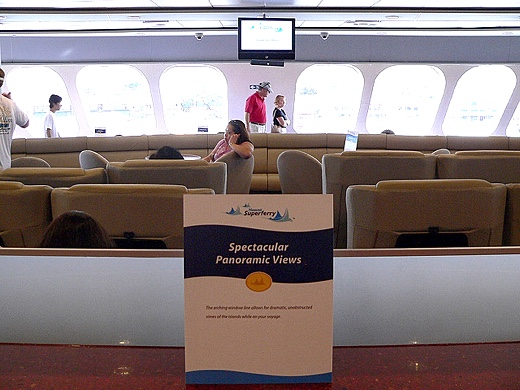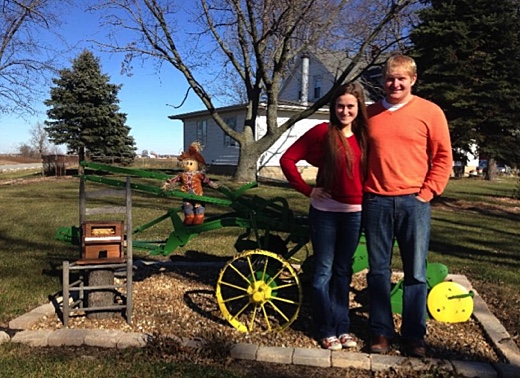SUBHEAD: Maybe some of these courses could be dug up and transformed into food forests.
By Karl Taro Greenfeld on 26 June 2015 for Mens Journal -
(
http://www.mensjournal.com/magazine/the-death-of-golf-20150625)
 Image above: A cart path on the abandoned Northgate Golf Course in Reno, Nevada, May 22, 2012. From (http://maxwhittaker.photoshelter.com/image/I00007q36TuLgBwE).
Image above: A cart path on the abandoned Northgate Golf Course in Reno, Nevada, May 22, 2012. From (http://maxwhittaker.photoshelter.com/image/I00007q36TuLgBwE).
One night last September, my 15-year-old daughter, Esmee, told me her plan to try out for the girls golf team here in Pacific Palisades, California. While I was pleased with her interest in golf — which I'd played semiseriously, along with seemingly every other man under 40 in the Tiger-dominated late '90s — I felt I had to prepare her for the inevitable letdown. She lacked the requisite power and the repeating, compact swing I assumed were required of a varsity golfer. Do your best, I told her, but be prepared for the possibility that you might not make the team.
When she texted me a week later to say she'd made the cut, I was stunned. In the years I'd gone to the school, the golf team was a bunch of country club regulars whose swings were nice right-path whips, golfers who'd been playing for a half-decade by the time they got to high school. I asked the coach, James Paleno, what had changed.
"There just isn't the interest we used to have 14, 15 years ago," he says. "Now I have kids showing up who have never hit a golf ball before. Kids are just less aware of golf. They have too many other options. And then when they find out it takes five and a half hours to play 18 holes, they're just not interested."
By any measure, participation in the game is way off, from a high of 30.6 million golfers in 2003 to 24.7 million in 2014, according to the National Golf Foundation (NGF). The long-term trends are also troubling, with the number of golfers ages 18 to 34 showing a 30 percent decline over the last 20 years.
Nearly every metric — TV ratings, rounds played, golf-equipment sales, golf courses constructed — shows a drop-off. "I look forward to a time when we've got the wind at our back, but that's not what we're expecting," says Oliver "Chip" Brewer, president and CEO of Callaway. "This is a demographic challenge."
During the boom, most of those 20-somethings who were out hacking every weekend were out there because of one man: Tiger Woods. Golf's heyday coincided neatly with Tiger's run of 15 major golf championships between 1997 and 2008. If you listen to golf insiders, he's the individual most to blame for those thousands of Craigslist ads for used clubs.
When Tiger triple-bogeyed his marriage, dallied with porn stars, and seemingly misplaced his swing all at once, the game not only lost its best player; it also lost its leading salesman. The most common answer given by golf industry types when asked what would return the game to its former popularity is "Find another Tiger."
But you can't blame one man's wandering libido for the demise of an entire sport. The challenges golf faces are myriad, from millennials lacking the requisite attention span for a five-hour round, to an increasingly environmentally conscious public that's reluctant to take up a resource-intensive game played on nonnative grass requiring an almond farm's worth of water, to the recent economic crisis that curtailed discretionary spending. "Golf is an expensive, aspirational game," says Brewer, "and a lot of millennials are struggling with debt and jobs. If you don't have a job, golf doesn't really fit you very well."
Combine the game's cost with the fact that golf is perceived as stubbornly alienating to everyone but white males — Augusta National, home of the Masters and perhaps the most famous golf club in the world, didn't accept black members until 1990 and women until 2012 — and it's no wonder young people aren't flocking to it. "One of the major reasons golf hasn't been growing is because historically, it has not been welcoming enough," says Greg Nathan, senior vice president of the NGF. "We need to make people feel more comfortable."
Not long ago, the game could count on young fathers to hide out on the links, and weekend tee slots are still filled with plenty of off-duty dads. But it takes two to properly helicopter-parent a family these days, and that means parents are spending more of their weekends at the playground than at the country club.
During the Tiger boom, everything about the game seemed to expand, from the length of the putters to the size of driver heads to the scale of the courses themselves. "When I won the U.S. Open at Bellerive in 1965, the course measured 7,191 yards. It was a monster," notes Gary Player, the only non-American to win a career Grand Slam.
"Now," he says, "7,500-yard courses are everywhere." And those courses have raised their greens fees. Pebble Beach may be able to charge $495 for a round, but when your local public course wants $150, it gets steep. And many of those golf courses weren't designed merely for golf; they were the lure for tens of thousands of homes that aimed to deliver one version of the American dream: golf course frontage.
Lake Las Vegas could be the poster development for an entire era of American excess — the real estate boom, the subprime mortgage crisis, and the exuberant overinvestment in golf courses as bait to sell property.
The 3,600-acre community built around a 320-acre artificial lake in Henderson, Nevada, featured two Jack Nicklaus–designed golf courses and one Tom Weiskopf course, the primary selling points for homes ranging from $500,000 to $5 million. Ritz-Carlton opened a resort on the lake, which was declared a "Hot Spot" in 2004 by the Washington Post.
One of those three golf courses has since closed, the Ritz-Carlton is long gone (it's now a Hilton), and some of the luxury houses have hit the market for as little as $150,000. The golf course has been converted to scrubby trails, and it turns out that homes on a desert are a lot less desirable than homes on a golf course.
"For so many years, golf was a tool for developers to sell property," says Phil Smith, a golf course designer who worked with Nicklaus and Weiskopf during the boom. "There wasn't a sense of long-term viability in some of these developments."
As the homes around them hit foreclosure, courses often went neglected, leaving behind what has become a depressingly common sight and the enduring symbol of the sport's sad state in America: the abandoned course going feral.
They line the Carolina coast and pepper central Florida, and are littered throughout the West —fairways sprouting dandelion heads, water hazards infested with snapping turtles, rattlesnakes slithering out of bunkers. According to the NGF, a golf course in America closes roughly every two days, while just 11 courses were opened in 2014.
Ron Gorski, 59, was the manager of the Escondido Country Club when it closed down in 2013. It's one of a string of courses that have gone brown along the Avocado Highway corridor running north from San Diego. San Luis Rey Downs, a couple of miles north, closed in August 2014, and Carmel Highland, just down the highway, hosted its last round in March. Gorski, who resembles the actor and former Tennessee senator Fred Thompson, grew up in Colchester, Connecticut, spending summers playing shirtless at a local course where his parents dropped him off and picked him up in the afternoon a couple of days a week.
Now, as he drives his Jeep Cherokee down what used to be the first fairway, he shakes his head as he shows me the water hazards gone dry, the stumps where the pine trees used to be — the course now a nocturnal playpen for local wildlife. The tennis courts are cracked, the swimming pool drained, the pro shop gutted. Hawks circle overhead.
The last foursome walked off the course on March 31, 2013, wrote their scores on their Escondido Country Club cards, and drove off.
"It was a damn shame," Gorski says, "but we tried everything under the sun. Lowering greens fees. Kids play free. Two for one. The owners were doing all kinds of Groupon deals, and the remaining members didn't like it." By the time Escondido Country Club closed, there were only 120 members, most paying $300 a month. "That didn't even cover our water bill."
The course was designed in the early 1960s to play through the upscale Escondido neighborhood of midwestern transplants who came to claim their place in the sun in ranch- and mission-style homes backing onto the course. The homeowners could drive their golf carts off their backyards onto the fairway and then up to the clubhouse. Gorski remembers the good times: "On Friday nights the place was hopping. There were gin rummy games going in the back room. And now look at this."
We've parked and are making our way through the taproom. The San Diego County sheriff's department did canine training here for a while, hiding packages of drugs somewhere in the vast clubhouse and letting the hounds run through the place.
As Gorski steps over the old utility bills and bank statements scattered all over the floor, he looks around the front dining room, notices fresh chunks of missing drywall, and says, "Someone's been in here." Scavengers have returned, jimmying open a side door and trying to strip out the copper piping from the walls. "There's not much left to take in here."
The owner of the course, a development firm named, aptly, Stuck in the Rough, intends to turn the acreage into a residential development, an option available to resorts in prime residential areas. "What else could you do with the place?" Gorski asks. "Golf just didn't work. We couldn't get the young families to come out."
Even before it was shuttered last fall, the Malibu Golf Club decided to cut down drastically on its exorbitant water bill. "They were only watering the tee boxes and the greens," says former club pro Gene Hori. "The good news was you could hit these monster drives, because the fairways were like asphalt and the ball would skip forever."
Now, the manorial wrought iron gates in front of Malibu's only golf club are padlocked, and a sign hangs zip-tied to the metal: beware of guard dogs on patrol. The man who currently oversees the course, Tom Hix, 61, has gray hair in a thick shock and a forehead pork-belly pink from the California sun. He is a co-managing member of Malibu Associates, which bought the course near the peak of the golf boom, in 2006, and then filed for Chapter 11 last March.
They put up the guard dog signs shortly after, to ward off would-be trespassers. (There are actually no dogs.) Hix has been developing golf courses for 30 years, as president of real estate and golf course developer Hix Rubenstein, and will not let his clubhouse be scavenged for scraps.
Instead, he has a vision: cutting down the seven-figure water bill by reducing water consumption and introducing a water-saving sewage-treatment facility that will satisfy 10 percent of the course's water needs. And then turn the Malibu Golf Club into a health-and-wellness center that just happens to include a golf course. "The days of private golf clubs are numbered," he says, "and you have to have something different."
That means building 40 four-bedroom villas, Beverly Hills housewife–level spa facilities, several restaurants, conference centers, and screening rooms, all housed in LEED-certified buildings and largely powered by solar panels. "By the time we're done, golf will be really ancillary." He's reassuring potential investors that only 20 percent of the revenue from the club will come from golf; the rest will be from locally sourced produce, barre-method fitness classes, and spa treatments.
In other words, make a golf course seem less like a golf course. "There's nothing else we can do to make this work."
By now the various attempts to "save" golf by making the game faster, cheaper, and easier to play have all taken on an air of desperation. There have been a number of initiatives and innovations designed to lure younger players onto the course — most of them attempts to speed up the game. "Golf is losing fans because of time," says Phil Smith. "We need to provide for that."
That means shorter courses, some three- or four-hole loops that can be played "through" existing courses, or bigger holes or short-game areas — anything so that a player can go out and swing a club and get back before sundown. "We have to shorten the courses and change the equipment," Gary Player says. "Your average golfer will have a much better experience if he or she doesn't feel the need to hit a driver off of every tee box."
There is also FootGolf, essentially golf played with a soccer ball, and Big Hole Golf, where the game is played with cups as wide as 15 inches, and, of course, Frisbee golf. The PGA and USGA have introduced Tee It Forward, which encourages players to set their tees well ahead of their normal tees, with the hope that beginner players can finish a round in three hours. "I'd like to play a game that can take place in three hours," Nicklaus told CNN this past January. "And something that isn't going to cost me an arm and a leg."
At every turn, the game is trying to lure younger golfers into the clubhouse. The USGA sponsors Drive, Chip & Putt, a skills program for juniors similar to the NFL's Punt, Pass & Kick, and one of last year's participants, 11-year-old Lucy Li, became the youngest player in history to qualify for the U.S. Women's Open. The First Tee, a partner of the PGA, LPGA, and several major corporations, has focused on introducing golf into schools by donating equipment and providing a golf-friendly curriculum.
Still, the sparse crowd on a Saturday afternoon at the Los Angeles Golf Show definitely skews more Arnold Palmer than Lucy Li. In fact, there's hardly anyone under the age of 50 who isn't manning a booth.
There were a few dozen golf courses and country clubs trolling for members: Angeles National, Rio Hondo, the Crossings at Carlsbad, each offering deeply discounted rounds and practically begging me to play at their courses. Their sales managers touted their yardage, conditions — "the only Nicklaus Design golf course in Los Angeles County," a "$44 weekday special including a hot dog and a soda" — and said they believed the golf business was finally rebounding.
But I didn't have to press very hard to get them to admit that business was slow. "It's a challenge," says Debora Main, marketing and sales manager of Candlewood. "It's been a tough few years."
 Image above: One of 13 Topgolf locations in the United States. Photograph by Ben and Kelly Photography / Courtesy Top Golf. From original article.
Image above: One of 13 Topgolf locations in the United States. Photograph by Ben and Kelly Photography / Courtesy Top Golf. From original article.
Nearly everyone I spoke with at the convention pointed to one company as the potential savior. "Maybe Topgolf is our Tiger," says Callaway's Brewer, which owns just under 20 percent of Topgolf, the company that has devised a simulated version of the game by putting microchips into balls at high-tech driving ranges.
Players hit into the target area as a computer screen keeps score based on how accurate the shots are. In between drinking, eating, and listening to the house DJs, they stand on an Astroturf mat and play 20 balls. It's golf's version of bowling.
The company was formed in the U.K. but was acquired by a U.S. investment group in 2005. Topgolf has 13 locations in the U.S., and will have 20 by the end of the year and as many as 50 by the end of 2017, including a 105,000-square-foot facility adjacent to the MGM Grand in Las Vegas. It's golf as karaoke, with crowds of young people sitting in hitting bays and partying between taking their hacks. And the company is booming, with revenue far exceeding $100 million this year. Most important for the golf industry, 54 percent of its 4 million visitors last year were between the ages of 18 and 34.
"We're not in the golf business, or, OK, we are, but we're really in the hospitality business," says Ken May, 54, the Topgolf CEO. He was the chief executive who presided over the merger of FedEx and Kinko's and joined Topgolf in 2013. "I opened 500 FedEx Kinko's. I know how to open a lot of boxes," he says, "and that's what we're doing here."
May has a compact, even swing. He lines up a 7-iron on the second deck of a Topgolf facility in The Colony, Texas, takes a short backswing, scoops the ball nicely, and pops it out to about 150 yards. A score comes up on the screen behind him, giving him four points and informing him that his next shot is worth double. There are nine games golfers can play at Topgolf, which has targets spread all around the range. So that even though I top my first shot, it skitters along the turf and into a target I hadn't even been aiming for, and I, too, pick up a few points.
"See," says May. "You get some points!"
May, who worked his way through Memphis State unloading boxes for UPS, was a casual golfer before he came to Topgolf. But that's fine, he says, because he sees himself as being in the fun business, not the golf business. The first requirement for every aspiring Topgolf associate who shows up for a group interview is to get up and dance. "We want people who are outgoing, guest-focused. A lot of people wash themselves out of the process, because on a break, they're checking their phones instead of socializing."
The atmosphere on a typical Friday or Saturday night is more nightclub than country club, albeit with some of the fattiest, heaviest food this side of a Cheesecake Factory. While a DJ spins on a lounge level, golfers chow down on Mushi (Mexican sushi), Mac Daddy Burgers (hamburgers with macaroni and cheese piled on top), and Injectable Donut Holes, all while ordering cocktails from an attendant assigned to their hitting bay. The formula is working, with four-hour waits for hitting bays — the patrons killing time at a fully stocked sports bar with dozens of screens. So the golf is pretty much pure profit.
It's the opposite of a stuffy country club or even a posh public course, where arranging a tee time, or even finding the starter's window, can be intimidating for a novice golfer. On a recent Monday night, I watched a pair of 16-year-olds, an African-American male and his white date, walk into the Colony location and start hitting. When I asked the girl about the experience, she said it was the first time she had ever hit a golf ball. But based on how fun the whole experience was — the food, the games, DJ Snake and Lil John's "Turn Down for What" blaring on the PA — she thought they would be back.
I went back to my hitting bay, waved my 5-iron in front of a sensor, and a microchipped ball already tagged with my name for scoring purposes came rolling down the ramp. I was hitting 'em OK, fading a little but making 200 or so yards, scoring 75 after 20 balls. (I have no idea if that's a good score or not.)
At one point a guy in khaki pants interrupted me during my backswing to tell me I was picking at the ball instead of scooping. Jeff Johnston was a PGA professional who offered a half-dozen little tweaks and pointers for my swing — unwanted advice, in other words, after which my game completely fell apart, just like it would have on a real course.
A week after the golf show, my daughter, Esmee, and I drove to a local course to cash in one of my vouchers. Esmee hadn't had a great season on her team, becoming progressively demoralized as the season went on. I understood why: Golf is a difficult, humbling game.
Our nine-hole round that afternoon was the classic good walk spoiled: lovely sun, cooling breeze, shimmering eucalyptus trees, and poorly hit balls zigzagging back and forth across the fairway. Our pace annoyed those behind us, so we let a foursome play through. I could see my daughter's frustration mount as she bent over her balls, swung down, popped her head, topped her shots, and it was all she could do to resist stomping from the course and never playing again.
Somehow I resisted the temptation to tamper with her swing, forgoing urgings not to bend her left arm or to open her clubhead. Occasionally I urged her to keep her head down, to follow through, but mostly I just watched and waited as she struggled through a miserable round.
On the seventh hole, a straight par 4 up a little hill and then an elbow to the right, Esmee botched her 2-iron off the tee, sending the ball skittering up the fairway. But her second shot, a 3-iron from the rough just left of the fairway, was magnificent, her swing a rightward path from three till nine that followed through, the contact a satisfying thwack, and the ball soaring some 200 yards, coming to rest just shy of the green. She stood for a moment watching it, and then she looked at me and smiled.
I knew she would remember that one good shot for the rest of her life.
.